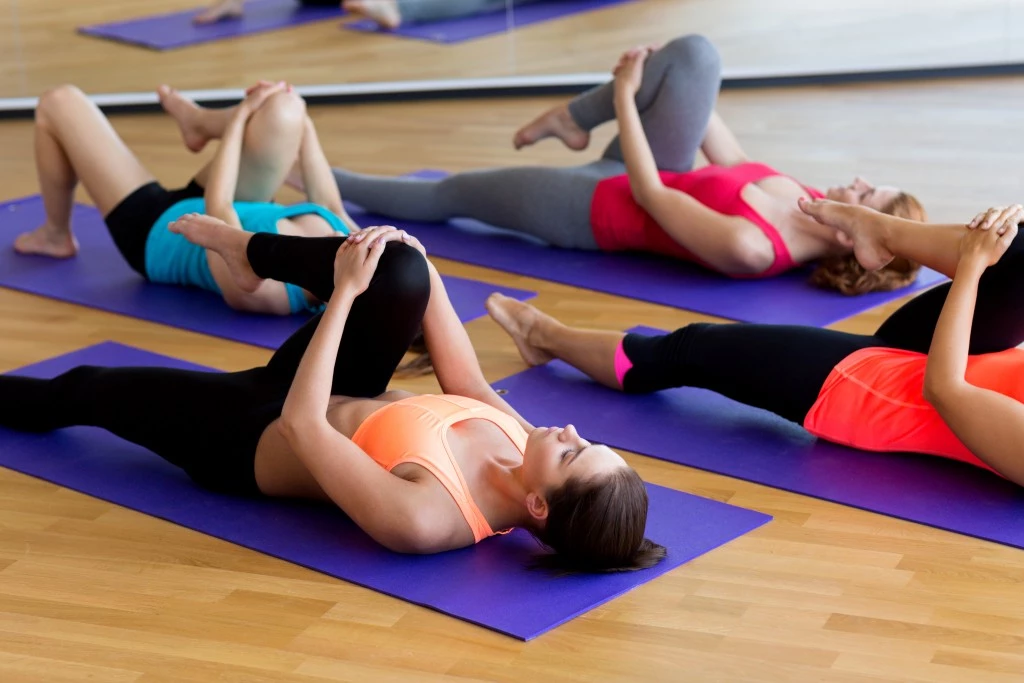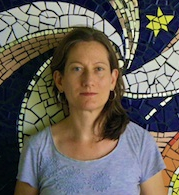Trauma-Informed Yoga: YogaHOPE and a New Strategy for Change

Yoga is increasingly being recognized as an exceptionally effective therapy for healing the often-devastating scars left by traumatic experiences on the body/mind. Informed by the pioneering work of trauma experts including Bessel van der Kolk, M.D., and Peter Levine, Ph.D., yoga teachers and mental health professionals alike are exploring how best to optimize and deliver the healing effects of yoga to veterans, recovering addicts, victims of sexual abuse, domestic violence survivors, and others suffering from trauma-induced pain and dysfunction.
Another pioneer in bringing the healing effects of yoga to vulnerable populations is Sue Jones, founder of YogaHOPE, a nonprofit dedicated to rehabilitative trauma-informed mind-body programming for women. YogaHOPE’s Trauma Informed Mind Body Program (TIMBo) curriculum is designed to work in widest possible range of clinical settings, including schools, prisons, hospitals, refugee camps, drug treatment centers, community health groups, and private practices. “HOPE” stands for “Healing Ourselves Through Personal Empowerment,” and the strategy of women helping women is central to the organization’s mission.
The Power of Simplicity
Designed specifically for women, the yoga-inspired TIMBo program works to heal the negative imprints of trauma on the body and mind by 1) giving women simple, effective and accessible tools for stress management and emotional self-regulation; 2) teaching them to become aware of bodily sensations so that they can use these tools to re-pattern negative feedback loops between the body and mind; and 3) empowering them to believe and participate in their own processes of healing and self-transformation.
Led by an all-female facilitation team, TIMBo is delivered to all-women groups of 5-20 participants. Typically, classes are 2 hours each, but may range from 1.5 – 2.5 hours. The full TIMBo course consists of 16 sessions, which may be offered once a week for 16 weeks, twice a week for 8 weeks, or once a day for two weeks. Participants are provided with workbooks, which are theirs to keep.
Every TIMBo class follows the same structure, which includes approximately an hour and 15 minutes of structured group discussion, and 45 minutes of asana and meditation practice. The consistency of the program is intentional, creating a safe, predictable, and repetitive structure that supports recovery from traumatic experiences that were dangerous, unpredictable, and overwhelming. At the same time, this standardized structure allows the program to be easily replicated and scientifically evaluated.
Each part of the class supports TIMBo’s core method of empowering students to unwind and re-pattern the negative imprints of trauma on the body/mind. In group discussions, for example, students may be asked to identify where feelings of fear manifest in their bodies, and then to pause, breathe into that space, self-regulate, and notice how the feeling shifts. Similarly, asana is taught to prioritize breathing and mindfulness, rather than exercise or even alignment, as the most critical parts of the practice.
“People who’ve experienced the program can’t believe how something so simple can be so powerful,” Sue reports. “Because it really is just groups of women sitting around talking, and doing yoga and meditation together.”
Again, this simplicity is intentional: In order to be widely accessible, the program has been “stripped of yoga philosophy and yogic language, and written at a 4th grade reading level.” Yet, even highly educated students have found the TIMBo experience to be profound and effective.
Will Yoga Become a Part of the Public Health System?
When discussing her work recently, Sue shared her vision of integrating trauma-informed yoga therapy into existing systems of public health education, training, and provision. “Our focus is on global public health,” she emphasized. “We don’t want trauma-informed yoga therapy to be an ‘alternative health’ modality; we want it to enter the mainstream as a standardized method of treatment.” In keeping with this goal, Sue is dedicated to making sure that the YogaHOPE program remains consistently “accessible, replicable, measureable, and research-based.”
With an over-burdened public health system desperately in need of relatively low-cost, yet potentially high impact interventions, will we one day see trauma-informed yoga integrated into our public health offerings? Only time will tell, but trail blazers like Sue Jones are determined to make it happen.
To learn more about Sue Jones and YogaHOPE, visit their website, yogahope.org.
 Carol Horton, Ph.D., is the author of “Yoga Ph.D.: Integrating the Life of the Mind and the Wisdom of the Body” and co-editor of “21st Century Yoga: Culture, Politics and Practice.” Carol holds a doctorate in Political Science from the University of Chicago, served on the faculty at Macalester College, and has extensive experience as a research consultant specializing in issues affecting low-income children and families. A Certified Forrest Yoga instructor, Carol teaches yoga to women in Chicago’s Cook County Jail with Yoga for Recovery, where she also serves on the Board. Carol is a co-founder of the Socially Engaged Yoga Network (SEYN), a collective dedicated to sharing the benefits of yoga with underserved communities in the Chicago area. To learn more, visit her website at carolhortonphd.com.
Carol Horton, Ph.D., is the author of “Yoga Ph.D.: Integrating the Life of the Mind and the Wisdom of the Body” and co-editor of “21st Century Yoga: Culture, Politics and Practice.” Carol holds a doctorate in Political Science from the University of Chicago, served on the faculty at Macalester College, and has extensive experience as a research consultant specializing in issues affecting low-income children and families. A Certified Forrest Yoga instructor, Carol teaches yoga to women in Chicago’s Cook County Jail with Yoga for Recovery, where she also serves on the Board. Carol is a co-founder of the Socially Engaged Yoga Network (SEYN), a collective dedicated to sharing the benefits of yoga with underserved communities in the Chicago area. To learn more, visit her website at carolhortonphd.com.



